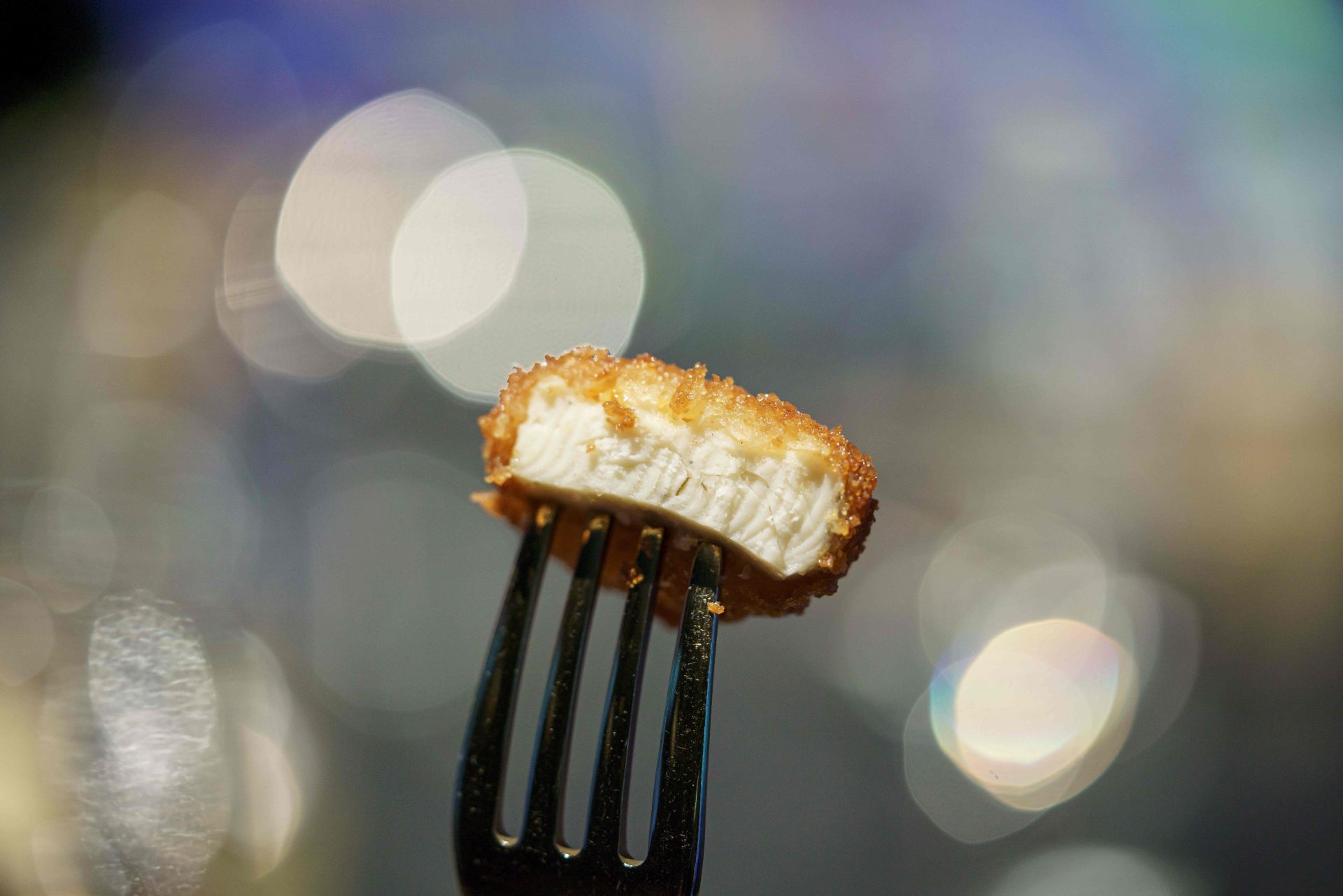
A nugget made from lab-grown chicken meat is seen during a media presentation in Singapore, the first country to allow the sale of meat created without slaughtering any animals, on December 22, 2020. (Photo by Nicholas YEO / AFP) (Photo by NICHOLAS YEO/AFP via Getty Images)
Scientists have figured out a meat production process that doesn’t require slaughtering live animals. And now, two restaurants will be the first to serve lab-grown chicken to the general public.
San Francisco’s Bar Crenn and a Washington D.C. restaurant owned by Chef Jose Andrés‘ plan to sell the approved meat. However, the exact dates of when the lab-grown meat will be available on their menus are unclear.
For context, the sale approval is new. On Wednesday (June 21), the U.S. Agriculture Department green-lighted two California companies, Upside Foods, and Good Meat, on the sale of chicken derived from animal cells. Regulators decided after each company passed the required federal inspections to sell meat in the United States.
Meanwhile, the “cell-cultivated” or “cultured” chicken has been deemed safe to eat for months. According to CBS News, Upside Foods got their green light in November 2022, while Good Meat got theirs in March.
Still, safety and sale approvals aside, lab-grown chicken products won’t be available in everyday grocery stores for a hot minute. Per AP, the “cultured” meat process has not scaled to cover that demand. Plus, it wouldn’t be a cheap buy for customers. In fact, AP reports that the average price of a single chicken cutlet made from animal cells could cost as much as “high-end organic chicken.”
Bar Crenn reportedly partnered with Upside Foods, while Chef Andrés will receive his lab-grown chicken from Good Meat. Andrés sits on the board of directors for the firm, per CBS News.
Both companies are now responsible for the nation’s first lab-grown meat. However, the U.S. is far from the first country to venture into producing and selling this type of meat. In 2020, Singapore claimed that title, approving the sale of Good Meat chicken products there.
To make cutlets, nuggets, and more, scientists start by collecting cells from a living chicken, a fertilized egg, or a cell bank. For example, Upside Foods uses cells from live animals, while Good Meat uses “a master cell bank formed from a commercially available chicken cell line,” per AP.
In both cases, these companies are selling meat products. Though killing chickens is not required for this process, the end product is still meat-derived. This means it is not comparable to alternatives like the Impossible Burger or Beyond Meat.
After collecting cells, scientists place the cells inside a bioreactor, also known as a cultivator or lab tank, with a “cell food” mixture. The mixture comprises “amino acids, fatty acids, sugars, salts, vitamins,” and other growth essentials. As the cells sit there for days to weeks, they develop into muscle, fat, and connective tissue–the animal parts humans typically eat.
Upside’s poultry cells form large sheets once the process is completed. Those sheets are molded into cutlets, sausages, and other chicken products. Good Meat’s cells grow into large clumps or masses, later shaped into similar products.
At Upside, the lab-grown chicken reportedly looks and cooks like regular chicken but is slightly paler. However, at Good Meat, the chicken will be pre-cooked, so its cook involves re-heating.
“The most common response we get is ‘Oh it tastes like chicken,'” Amy Chen, Upside’s COO, told AP.
The production of lab-grown meat aims to reduce the environmental impact of harvesting animals and managing their care and waste.